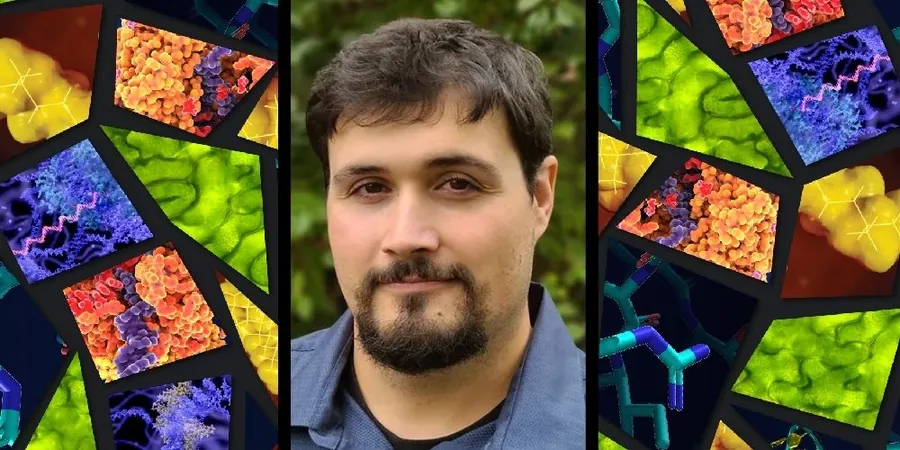
Revolutionary Brain-on-a-Chip Technology Set to Transform Neuroscience Research!
2024-11-04
Author: Nur
Introduction
In a groundbreaking development that could reshape the future of neuroscience, a miniature device that fits in the palm of your hand is now being hailed as the next big leap in understanding the human brain and its intricate vascular systems.
Development and Design
Developed by Brian O’Grady, a postdoctoral fellow at Vanderbilt University and recognized scholar under the American Society for Biochemistry and Molecular Biology's MOSAIC program, this innovation involves isolating blood vessels from postmortem human brain tissue and cultivating them within a hydrogel that mimics the brain's natural environment—a device aptly named the 'brain-on-a-chip.' Impressively, it is about the size of a car key!
O'Grady's Journey
O’Grady’s journey into this fascinating domain began during his master’s program in biology, where he was drawn to hands-on, practical applications of science. With a passion for engineering and a knack for fixing things—evidenced by his revival of a treasured 1971 Corvette—he pivoted his career towards materials science and biomedical engineering.
A Solution for a Complex Problem
Motivated to engineer solutions to pressing biological questions, O’Grady set his sights on creating a robust model system aimed at testing potential treatments for aggressive brain cancers like glioblastoma. Given the complexity of the human brain, traditional clinical trials often stumble, suffering from a staggering failure rate exceeding 95%. 'We need better models,' O’Grady emphasizes, outlining the urgent need for more effective testing environments.
The Challenge of the Extracellular Matrix
The challenge of replicating the extracellular matrix of the brain has long perplexed researchers, as it is composed of dozens of intricate components, including glycosaminoglycans, proteoglycans, tenascins, collagens, and more. O’Grady’s innovative solution employs an essential molecule, the N-cadherin peptide, which strengthens the extracellular matrix and enhances cell survival and maturation.
Creating a Realistic Environment
By integrating this peptide into the hydrogel framework, O’Grady has ingeniously created an environment where neural cells behave as if they are in close proximity to one another—just like in the brain. 'We trick the neural cells into thinking they are surrounded by their natural counterparts, fostering a realistic cellular handshake,' he explains.
Implications of the Technology
This pioneering brain-on-a-chip technology heralds a new era of drug testing and disease research, with potential implications that could revolutionize how we understand and treat neurological disorders. By providing a more accurate platform to study the complex blood-brain barrier, O'Grady hopes to significantly improve clinical trial success rates.
Conclusion
'If we can successfully create a humanized testing environment on a chip, we'll have the ability to test compounds more effectively for their ability to pass through the blood-brain barrier and target tumor cells,' O’Grady asserts. As neuroscience pushes the boundaries of traditional research, innovations like the brain-on-a-chip not only pave the way for breakthroughs in treatment but also offer hope for countless individuals battling brain-related disorders. Stay tuned as this technology promises to unlock new possibilities in medical science!





 Brasil (PT)
Brasil (PT)
 Canada (EN)
Canada (EN)
 Chile (ES)
Chile (ES)
 Česko (CS)
Česko (CS)
 대한민국 (KO)
대한민국 (KO)
 España (ES)
España (ES)
 France (FR)
France (FR)
 Hong Kong (EN)
Hong Kong (EN)
 Italia (IT)
Italia (IT)
 日本 (JA)
日本 (JA)
 Magyarország (HU)
Magyarország (HU)
 Norge (NO)
Norge (NO)
 Polska (PL)
Polska (PL)
 Schweiz (DE)
Schweiz (DE)
 Singapore (EN)
Singapore (EN)
 Sverige (SV)
Sverige (SV)
 Suomi (FI)
Suomi (FI)
 Türkiye (TR)
Türkiye (TR)
 الإمارات العربية المتحدة (AR)
الإمارات العربية المتحدة (AR)